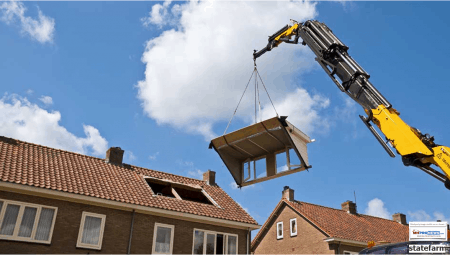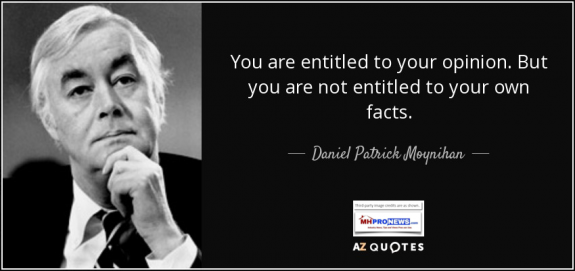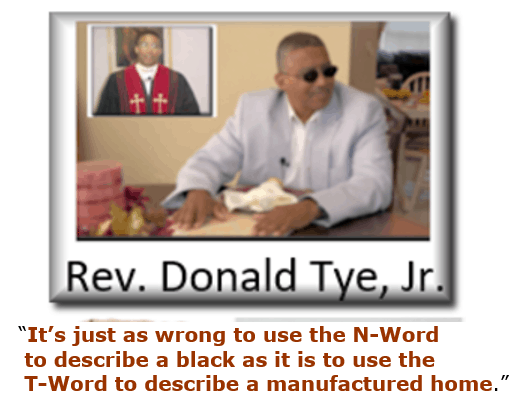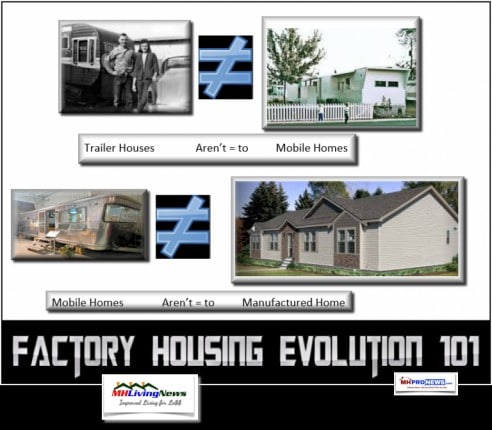
“A lot has changed in the way manufactured homes are constructed, utilized, and perceived,” reads a page on the State Farm Insurance website. Those are the first words under the photo at the left and after their classic headline, “Beyond ‘Trailers’ – Buying Modern Manufactured Homes,”
“For starters, there’s sometimes confusion about exactly what is meant by ‘manufactured home.’ Rule number one: Don’t call them ‘trailers’ or ‘mobile homes,’” says State Farm.
Bingo.
That’s a spot on, correct statement of fact.
While there are search engine optimization and other reasons why words like ‘mobile home’ ought to be considered, and possibly used, it should be done so juxtaposed in just the manner that State Farm did. As a segue into the correct terminology – and then, ideally – why that nomenclature matters.
“Here’s what the current terms mean for this category of affordable housing styles, and why those outdated terms don’t really apply anymore,” their post says, and continues as follows – which includes, from their perspective, an understandable tilt as to what this means for those seeking home owner insurance.

- Prefabricated Homes: This is the general term used to refer to any type of home that is constructed off-site (in a production plant or factory) and then transported to the building site. Prefabricated homes are usually insured under a standard Homeowners policy.
- Modular Homes: Prefab homes that are constructed in two or more sections at the factory and then usually transported to the building site on a flatbed truck. Constructed to conventional building codes, they may have multiple floors and more steeply pitched roofs.
- Panelized Home: Unlike modular homes, these are constructed as separate wall sections and then assembled by the builders at the site. (‘Pre-cut’ homes are a type of panelized homes.)
- Manufactured Homes: Usually single-story, they mostly come in double-wide or triple-wide configurations that are much roomier and more ‘house-like’ than the outdated idea of a single-wide (narrow) version — the latter type being what’s often conjured by the term ‘trailer.’ Federal Manufactured Home Construction and Safety Standards (HUD Code) define rigorous guidelines for manufactured homes. The most recognized distinction from modular homes is that that they have a permanent steel I-beam chassis and wheels under the floor so they can be towed rather than carried on the back of a truck.
-
- Mobile Homes: You’ll often see this term used interchangeably when referring to today’s manufactured homes. But technically, the term ‘mobile home’ only applies to dwellings built before June 1976, when the HUD Code went into effect.”
From a just-the-facts perspective, most of the above is spot on. It arguably deserves the appreciation of professionals in manufactured housing – and broader factory built home industry.
40th birthday of Manufactured Housing, End of Mobile Home era – manufacturedhomelivingnews.com
Lakeland, Fla. June 15, 1976 – Ever since the industrial revolution, factories have been a driving force in the economy – and in American culture. But the fact that millions of those 1950s- to mid-70s-era homes still exist today is silent testimony that they, too, often had enduring qualities.
There is one problematic point in the section above, and it is this; “that are much roomier and more ‘house-like’ than the outdated idea of a single-wide (narrow) version — the latter type being what’s often conjured by the term ‘trailer.’”

There are objective and subjective statements. Much of the start of their post was objectively accurate, but that one line shown above, was subjective – a personal opinion.
Most Popular Home of Year Goes To…Shotgun like ‘Single Sectional’ – Think “Lido” Manufactured Home
As regular MHLivingNews and MHProNews readers know, single-sectionals often have floorplans similar to other forms of conventional housing, including shotgun houses, and some multifamily construction floorplans.
Walk Down Memory Lane: From Trailers and Mobile Homes to Early and Modern Manufactured Homes (Video) – manufacturedhomelivingnews.com
With millions of Americans stuck in ever-rising rental rates, and skyrocketing conventional housing prices, the need for an appealing, safe and affordable option is clear – and the solution is hiding in plain sight. Perhaps 99 percent of all Americans are operating under a number of outdated and misinformed notions about factory-built homes.
Single sectionals – what State Farm’s post called “single-wide (narrow)” do conjure the image for many of a “trailer house.” That’s sad, but true. Still, they are popular, accounting for half of the production or more of some HUD Code manufactured home producers. Nor should a single sectional be looked upon as inferior. It’s arguably the most affordable kind of permeant housing, when measured on a cost-per-square-foot basis.

That ‘narrow’ view is thus subjective, an opinion held in the eye of the beholder, in the following sense. Tiny houses – which manufactured home advocate Rev. Donald Tye Jr. calls a ‘true trailer house,’ because it may be towable by pickup truck – are hip in the eyes of millions.
The rest of their column on the topic of manufactured homes and other forms of prefabs is similar to the above. It includes statements that may be spot on, mixed with others that are less accurate, or problematic.

But compared to many third party researchers or those with an interest in the industry that are looking into manufactured homes, the overall thrust of their article is pretty good.
If thousands of journalists grasped what State Farm did in the reviewed portion of the post, the manufactured home industry would arguably be ahead.
NAR’s Yun – No Quick Fixes Spell$ Manufactured Housing Opportunitie$
As a closing thought, does their article reflect the reality that giant State Farm Insurance desires targeting an industry they see growing in the future?
Stay tuned. ## (Business news, fact check, analysis, and commentary.)
(Image credits are as shown above, and when provided by third parties, are shared under fair use guidelines.)



























